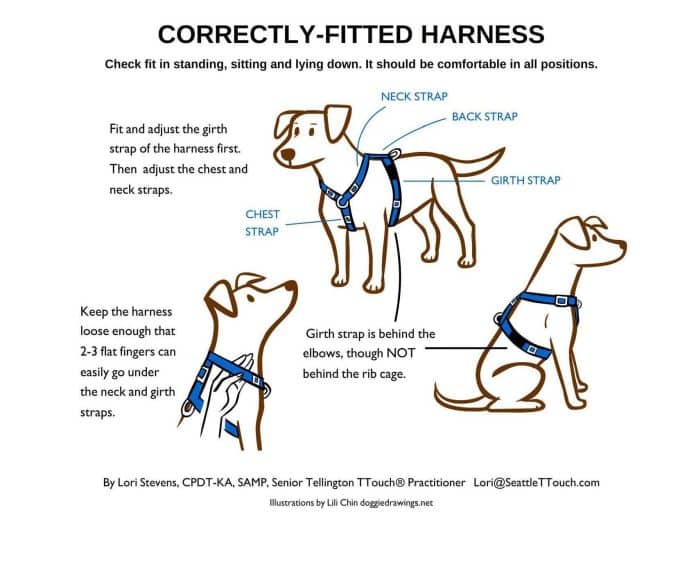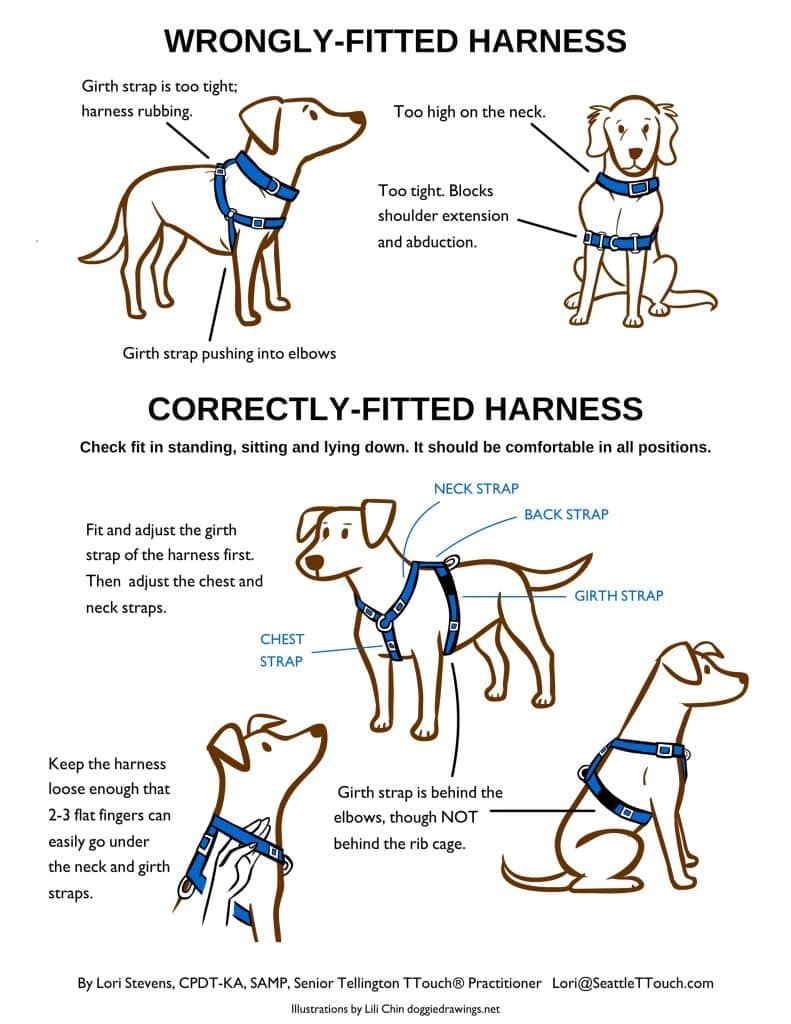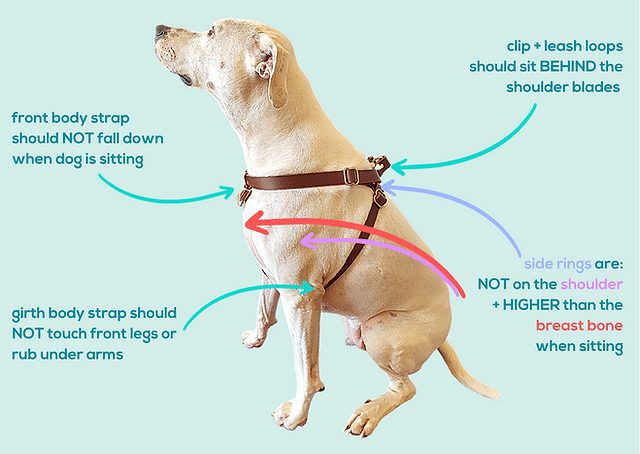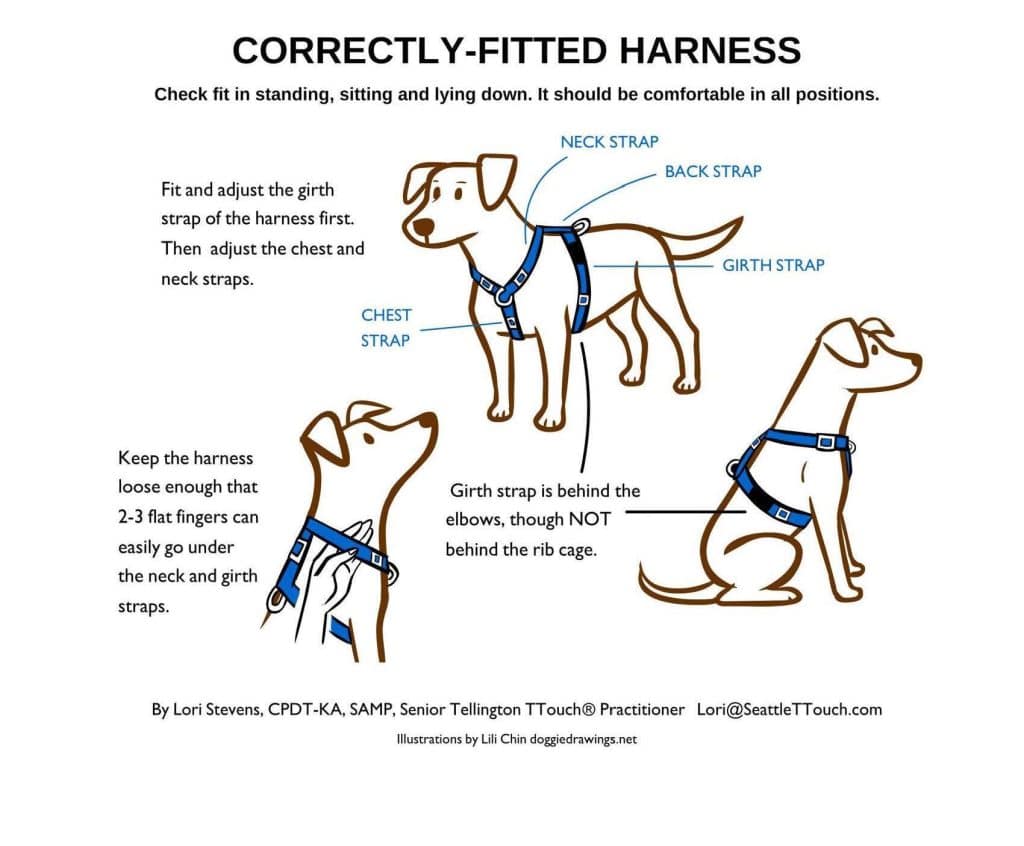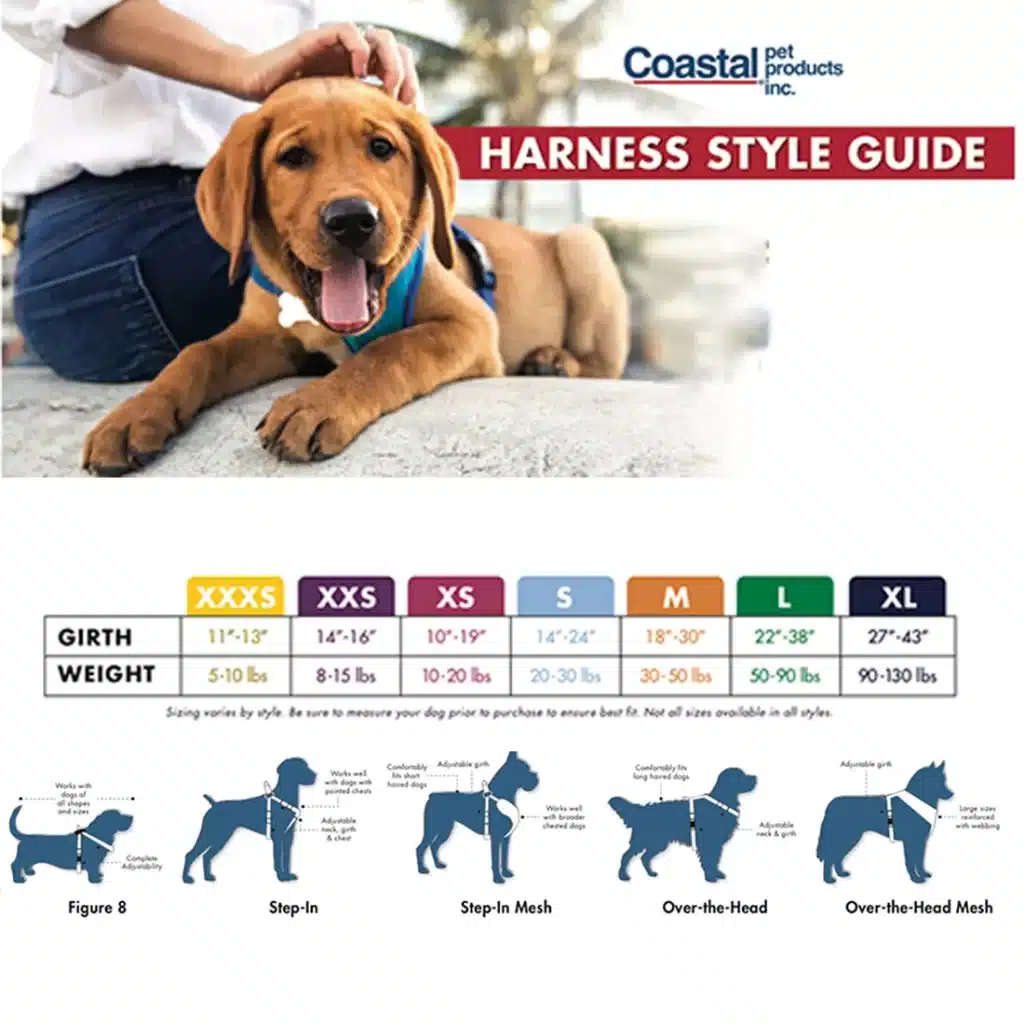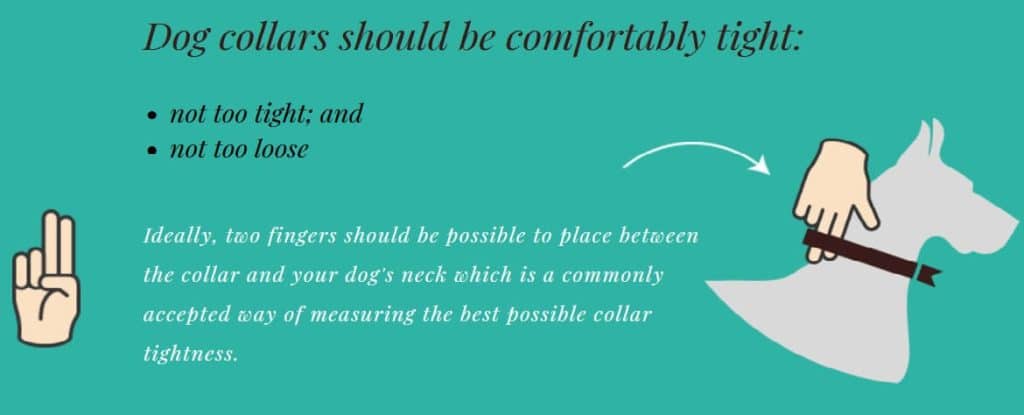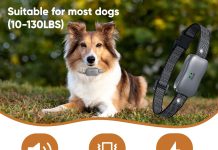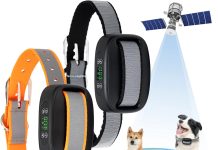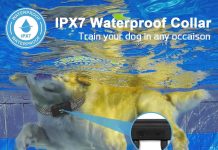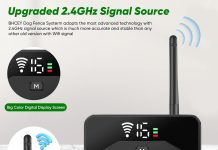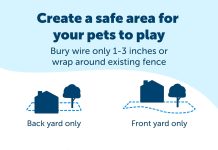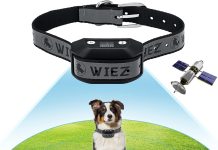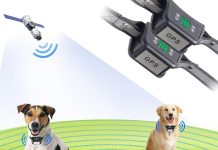You want to ensure your furry companion is comfortable and safe during walks, and finding the right fit for their harness is crucial.
But how exactly tight should a dog harness be? It’s a common question among pet owners.
In this article, we will dive into the importance of getting the perfect fit for your pup’s harness and provide some helpful guidelines to ensure their comfort and security on every stroll.
So, let’s find out how to make sure your dog’s harness is just right!
Choosing the Right Size
When choosing the right size harness for your dog, there are a few factors to consider. Measuring your dog is the first step in determining the correct size. Knowing your dog’s age and breed is also important, as different breeds have different body shapes and sizes. Additionally, using size guides manufacturers provide can help select the appropriate size. RRemember that puppies will grow, so adjustable harnesses are an excellent option.
Table of Contents
Measuring Your Dog
You will need a flexible measuring tape to measure your dog for a harness. Start by measuring the circumference of your dog’s chest, just behind its front legs. This measurement will help you determine the size range your dog falls into. Additionally, measure their neck circumference to ensure a comfortable fit around the neck.
Considering Dog’s Age and Breed
The age and breed of your dog can play a significant role in the size and shape of their body. Larger breeds will typically require larger harnesses to accommodate their size comfortably. Similarly, puppies may need to start with a smaller size and transition to a larger one as they grow. Remember that some breeds may have broader chests or longer bodies, so considering these factors will help you choose the correct size harness.
Using Size Guides
Most manufacturers provide size guides for their harnesses. These guides typically include a range of weight and girth measurements, helping you select the most appropriate size for your dog. These guides are on the product packaging or the manufacturer’s website. By following these size guides, you can be confident that you are getting the correct size harness for your furry friend.
Adjusting Harness for Growth
If you have a puppy, choosing a harness that can be easily adjusted as they grow is essential. Look for harnesses with adjustable straps that allow you to lengthen or shorten them. This will ensure the harness remains snug and secure on your puppy despite their growth spurts. It’s crucial to periodically adjust the harness to prevent discomfort or restriction as your puppy grows.
Proper Fit
Ensuring a proper fit is essential for your dog’s comfort, safety, and mobility. A well-fitting harness should allow your dog to move freely without chafing or discomfort. It should also avoid restricting their breathing while providing secure attachment points.
Ability to Move Freely
A properly fitted harness should never restrict your dog’s movement or hinder their mobility. It should allow them to walk, run, sit, and lie comfortably. The harness should fit snugly but not too tightly, enabling your dog to move its legs and body without any restrictions. A well-fitting harness will promote natural movement and prevent any discomfort or irritation.
No Chafing or Discomfort
To ensure your dog’s comfort, it’s crucial to choose a harness that doesn’t cause any chafing or discomfort. Check for any potential rubbing points, especially around the neck, chest, and belly. Look for harnesses with soft padding or lining in these areas to prevent any irritation or chafing. It’s essential to regularly inspect the harness for any signs of rubbing or discomfort and adjust or replace it as necessary.
Avoiding Restricted Breathing
Your dog’s harness should never restrict their breathing or pressure their throat or neck. Choosing a harness that distributes the pressure evenly across their chest and back, away from their sensitive neck area, is essential. This is especially important for dogs with respiratory issues or flat-faced breeds, as they are more prone to breathing difficulties. Always ensure that the neck opening of the harness allows your dog to breathe comfortably and doesn’t strain their airways.
Securing the Harness Properly
Properly securing the harness is crucial to ensure your dog’s safety and prevent escape attempts. Check that the buckles and straps are securely fastened and not too tight or loose. A loose harness may cause your dog to slip out, while an overly tight one can cause discomfort or even breathing difficulties. Double-check that the D-ring is attached to the leash, securely attached to the harness, and can withstand the pulling force. Securing the harness properly will give you peace of mind during walks or outdoor adventures.
Checking Harness Fit
Once you have chosen the right size harness for your dog, it’s essential to check the fit to ensure it is comfortable and secure. Pay close attention to the neck opening, width and length, chest and belly straps, buckle, and D-ring.
Measuring the Neck Opening
The neck opening of the harness should be snug but not too tight. You should be able to fit two fingers comfortably between the harness and your dog’s neck. If the opening is too loose, your dog may be able to slip out of the harness. On the other hand, if it’s too tight, it can restrict their breathing or cause discomfort. Take the time to adjust the neck opening to ensure a proper fit.
Evaluating Width and Length
The width and length of the harness play a role in distributing the pressure evenly across your dog’s body. A harness that is too narrow may dig into their skin and cause discomfort or chafing. Additionally, if the harness is too short, it may not provide enough support or coverage. Evaluate the width and length of the harness to ensure it fits your dog’s body shape properly and provides ample support without any rubbing or irritation.
Inspecting Chest and Belly Straps
The chest and belly straps of the harness should be positioned securely and comfortably. They should wrap snugly around your dog’s chest and belly without causing any restriction or discomfort. Check that the straps are correctly aligned and not twisted. Twisted straps can create pressure points and potentially cause discomfort or chafing. Additionally, ensure that the straps are easily adjustable and can be tightened or loosened.
Verifying Secure Buckle and D-Ring
It’s essential to inspect the buckle and D-ring of the harness to ensure they are secure and in good condition. The buckle should fasten securely and stay closed during walks or activities. If the buckle becomes loose or damaged, it may compromise the harness’s ability to stay in place. The D-ring, which attaches to the leash, should be sturdy and firmly attached to the harness. A loose or weak D-ring can result in a lost dog if it becomes detached during walks.
Adjusting the Straps
Properly adjusting the straps of your dog’s harness is essential to achieve the perfect fit. This includes tightening or loosening the neck opening, ensuring the proper fit of the chest and belly straps, avoiding over-tightening or gap formation, and double-checking the length of the straps.
Tightening or Loosening Neck Opening
The neck opening should be adjusted to fit snugly without causing any discomfort or restriction. If the opening is too loose, your dog may be able to slip out of the harness. On the other hand, if it’s too tight, it may constrict their breathing or cause discomfort. Take the time to adjust the neck opening by loosening or tightening the strap until it fits snugly but comfortably around your dog’s neck.
Ensuring Proper Chest and Belly Fit
The chest and belly straps should be adjusted to fit securely around your dog’s body. Check that the straps are not too loose, as your dog may be able to escape or wiggle out of the harness. Conversely, if the straps are too tight, they can cause discomfort or restrict your dog’s movement. Adjust the straps to ensure they wrap snugly around your dog’s chest and belly, offering a secure fit without causing any discomfort.
Avoiding Over-tightening or Gap Formation
It’s essential to avoid over-tightening when adjusting the straps, as this can lead to discomfort or restricted movement. Ensure the straps are snug but not overly tight, allowing your dog to move freely. Additionally, avoid leaving any gaps between the harness and your dog’s body. Gaps can result in rubbing or chafing, making the harness uncomfortable for your furry friend. Take the time to adjust the straps until the harness fits snugly and comfortably.
Double Checking Strap Length
After adjusting all the straps, it’s crucial to double-check the length to ensure they are correctly adjusted. Uneven strap lengths can cause imbalance or discomfort for your dog. Ensure the straps are adjusted evenly on both sides of the harness, allowing for proper support and weight distribution. By double-checking the strap length, you can ensure a well-fitting harness that provides maximum comfort and functionality.
Ensuring Safety
When it comes to your dog’s harness, safety should be a top priority. This includes preventing escape, avoiding slippage, ensuring secure attachment points, and choosing escape-proof designs.
Preventing Escape
A properly fitted harness should have features that prevent your dog from escaping. To deter escape attempts, check for additional security measures, such as belly straps or leg loops. These features make it more difficult for your dog to wriggle out of the harness while providing you with peace of mind during walks or outdoor activities.
Avoiding Slippage
Slippage can be a concern if the harness is improperly fitted or secured. Ensure your dog’s harness has adjustable straps that can be tightened to prevent slippage. Additionally, check that all the buckles and closures are securely fastened and show no wear or damage. Regularly inspecting the harness for signs of slippage will help ensure your dog’s safety and prevent accidents or escapes.
Secure Attachment Points
The attachment points on your dog’s harness should be secure and able to withstand the pulling force of the leash. Inspect the D-ring and the stitching or reinforcement around it to ensure it is solid and durable. If you use a harness with multiple attachment points, such as ones on the chest and back, ensure they are equally secure. A secure attachment point is crucial for maintaining control and preventing unexpected incidents or escapes.
Choosing Escape-Proof Designs
If you have a dog with a talent for Houdini-like escapes, consider using an escape-proof harness. These harnesses feature unique designs and additional security measures to prevent your dog from wiggling out. Look for features such as multiple adjustable straps, belly bands, or leg loops that make it nearly impossible for your dog to escape. You can enjoy worry-free walks and outdoor adventures with your furry friend by choosing an escape-proof design.
Considering Comfort
Comfort is paramount when selecting a harness for your dog. This includes eliminating rubbing or chafing, providing proper padding for sensitive areas, adjusting for seasonal clothing, and avoiding excessive pressure points.
Eliminating Rubbing or Chafing
Rubbing and chafing can quickly make a harness uncomfortable for your dog. Pay close attention to areas where the harness may rub against your dog’s skin, such as the neck, chest, and belly. Look for harnesses with soft padding or lining in these areas to minimize rubbing and chafing. Additionally, regularly inspect the harness for any signs of irritation or discomfort and make adjustments or consider switching to a different harness if necessary.
Proper Padding for Sensitive Areas
Some dogs have sensitive areas that require extra padding for added comfort. For example, dogs with short coats or thin skin may benefit from harnesses with additional padding around the chest and belly. This padding provides protection and cushioning, preventing discomfort or chafing. When selecting a harness, consider your dog’s needs and look for options that provide adequate padding in sensitive areas.
Adjusting for Seasonal Clothing
If you live in a region with distinct seasons, you may need to adjust your dog’s harness for different weather conditions. During colder months, your dog may wear additional layers of clothing, such as sweaters or jackets. Ensure the harness can accommodate these extra layers without causing any discomfort or restriction. Similarly, ensure the harness is lightweight and breathable during hotter months to prevent your dog from overheating. Adjusting the harness for seasonal clothing will help keep your dog comfortable and content throughout the year.
Avoiding Excessive Pressure Points
Specific harness designs can create pressure points that can be uncomfortable for your dog. These pressure points can occur where straps or buckles intersect or in areas with excessive tension. Look for harnesses with well-distributed pressure that avoid concentrating it in a single area. Additionally, regularly check your dog’s skin for any redness or irritation, which may indicate excessive pressure. Avoiding unnecessary pressure points ensures your dog remains comfortable and happy while wearing their harness.
Medical Conditions and Special Needs
Some dogs may have specific medical conditions or special needs requiring a harness to accommodate them. Whether your dog is a senior, has respiratory issues, is recovering from an injury, or has mobility challenges, harness options that cater to its unique requirements are available.
Harnesses for Senior Dogs
As dogs age, they may experience decreased mobility or have specific health conditions that need addressing. Look for harnesses designed specifically for senior dogs, providing additional support, padded straps, and stability. These harnesses often have handles or assistive devices that support and stabilize senior dogs during walks or other activities.
Harnesses for Dogs with Respiratory Issues
For dogs with respiratory issues or flat-faced breeds, choosing a harness that doesn’t pressure their throat or airways is essential. Look for harnesses with wider chest straps that distribute the pressure evenly across the chest, away from the neck and throat. Harnesses with a front-attaching chest clip can also help prevent any strain on the neck when walking. Always consult your veterinarian for specific recommendations based on your dog’s respiratory condition.
Supportive Harnesses for Injured Dogs
If your dog is recovering from an injury or surgery, it may require a supportive harness to aid their rehabilitation. These harnesses often have additional handles or straps that allow you to support your dog’s weight during walks or assist them in navigating obstacles. Supportive harnesses can provide stability and comfort, making the recovery process more manageable for your furry friend.
Harnesses for Dogs with Mobility Challenges
Dogs with mobility challenges, such as those with hip dysplasia or arthritis, may benefit from harnesses that offer extra support and assistance. Look for harnesses with handles or lifting straps that allow you to help your dog navigate stairs or rugged terrain. Additionally, choosing harnesses with adjustable straps can help accommodate any mobility aids, such as wheelchairs or braces, your dog may need.
Behavioral Factors
Your dog’s behavior and training can also influence the type of harness most suitable for them. Whether your dog is a puller, an escape artist, or exhibits reactive or aggressive behavior, harness options cater to their needs.
Trainability and Leash Manners
Choosing a suitable harness is crucial if your dog is still in the training phase or has leash manners that need improvement. Look for harnesses that discourage pulling behavior, such as front-attachment harnesses. These harnesses redirect your dog’s attention and discourage pulling by helping you maintain control and guiding their direction. By choosing a harness that supports training and leash manners, you can help your dog become a well-behaved walking companion.
Harness for Pulling Dogs
Consider using a no-pull or anti-pull harness for dogs that tend to pull during walks. These harnesses often have a front attachment point that redirects the pulling force to discourage the behavior. With the pull distributed to the chest rather than the neck, your dog will be less likely to strain or pull. Using a harness designed for pulling dogs can make walks more enjoyable and controlled for you and your furry friend.
Choosing Houdini-Proof Harnesses
If your dog is an escape artist with a knack for slipping out of their harness, consider choosing a Houdini-proof harness. These harnesses often feature additional security measures such as multiple adjustable straps, belly bands, or leg loops, making it incredibly difficult for dogs to escape. If your dog has managed to escape from traditional harnesses in the past, investing in a Houdini-proof harness can help ensure their safety and prevent any accidental escapes.
Harnesses for Reactive or Aggressive Dogs
A harness that controls and discourages pulling is essential if your dog exhibits reactive or aggressive behavior toward other dogs or people. Look for harnesses with a front-attachment point that gives you better control and redirects your dog’s attention. Additionally, seeking professional guidance and training is essential to appropriately address your dog’s behavioral issues. A certified dog trainer, behaviorist, or veterinarian can recommend specific harness options to address your dog’s reactive or aggressive behavior.
Professional Advice
When in doubt or faced with specific challenges, seeking professional advice can be highly beneficial. Consulting a veterinarian or canine expert can provide valuable insights and recommendations based on your dog’s needs and circumstances. Additionally, seeking guidance from professional trainers can help address behavioral issues and ensure you select the most appropriate harness for your dog.
Consulting a Veterinarian or Canine Expert
Your veterinarian or a canine expert can provide valuable advice on choosing a harness that suits your dog’s needs. They can offer insights based on your dog’s breed, size, age, and underlying medical conditions. Veterinarians and canine experts have a wealth of knowledge and experience with different harness designs and can provide recommendations tailored to your dog’s unique requirements.
Seeking Guidance from Professional Trainers
If your dog has specific behavioral challenges, seeking guidance from a professional trainer is highly recommended. Trainers can provide training techniques and strategies to address pulling, leash manners, reactivity, or aggression. They can also suggest which type of harness is most suitable for your dog’s needs. A trained professional can guide you through the training process and help you select a harness that supports your training goals.
Dog Behaviorist’s Input on Harness Fit
In cases where your dog’s behavior is influenced by discomfort or physical limitations, consulting a dog behaviorist can be beneficial. A behaviorist can evaluate your dog’s behavior and assess how it may be related to the fit of their harness. They can provide recommendations on harness adjustments or alternative options that can help address any discomfort or behavioral issues related to the harness.
Reviewing Recommendations from Dog Handlers
Dog handlers, such as service dog trainers or search and rescue professionals, have extensive experience working with different harness types. Their insights and recommendations can be valuable when selecting a harness for your dog. Dog handlers often require durable, comfortable, and reliable harnesses for their working dogs, so their expertise can help guide you in finding a harness that meets your dog’s specific needs.
Importance of Regular Checks
Once you have chosen and adjusted the perfect harness for your dog, you must check the fit and make necessary adjustments regularly. Monitoring for weight changes, checking the harness fit after exercise, periodic adjustments for growing puppies, and replacing worn-out or damaged harnesses are essential to ensure your dog’s comfort and safety.
Monitoring for Weight Changes
Weight changes can affect the fit of your dog’s harness. If your dog gains or loses significant weight, the harness may become too tight or too loose. Regularly monitor your dog’s weight and adjust the harness accordingly. A well-fitted harness ensures your dog’s comfort during walks or other activities.
Checking Harness Fit after Exercise
After a vigorous exercise session, it’s essential to check the fit of your dog’s harness. Physical activity can cause the harness to shift or loosen, potentially compromising the fit and security. Take a moment to ensure all straps are properly adjusted and securely fastened. By checking the harness fit after exercise, you can maintain optimal comfort and safety for your dog.
Periodic Adjustments for Growing Puppies
Puppies increase, and their harness may need frequent adjustments to accommodate their changing body size. Regularly check the fit of the harness and adjust the straps as necessary. Pay close attention to the neck opening, chest and belly fit, and strap length. You can ensure your growing puppy always has a well-fitting harness by making periodic adjustments.
Replacing Worn-Out or Damaged Harnesses
Over time, harnesses can experience wear and tear or become damaged. Regularly inspect the harness for any signs of damage, such as frayed straps or compromised buckles. If you notice any wear or damage, replacing the harness promptly is essential. A worn-out or damaged harness may pose a safety risk for your dog and compromise its comfort and mobility. Regularly replacing worn-out or damaged harnesses will help provide a safe and secure walking experience for your furry friend.
In conclusion, choosing the right size and ensuring a proper fit for your dog’s harness is crucial for their comfort, safety, and mobility.
You can select the perfect size harness by measuring your dog, considering its age and breed, using size guides, and adjusting for growth. Additionally, factors such as the ability to move freely, no chafing or discomfort, avoiding restricted breathing, and securing the harness properly play a significant role in ensuring a proper fit.
Regularly checking the fit of the harness, adjusting the straps correctly, and considering safety, comfort, and your dog’s unique needs will contribute to an enjoyable and safe walking experience.
Seeking professional advice when necessary and performing regular checks for weight changes, fit after exercise, and worn-out harnesses will help ensure your dog’s comfort, safety, and overall well-being. Remember, a well-fitted harness is the key to happy and worry-free walks with your beloved companion.

